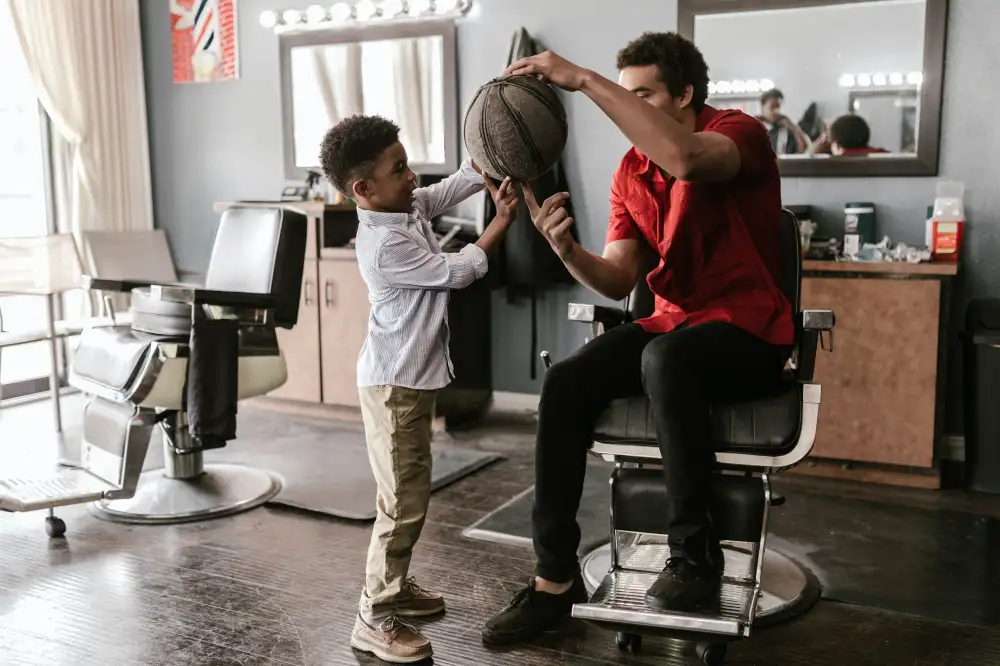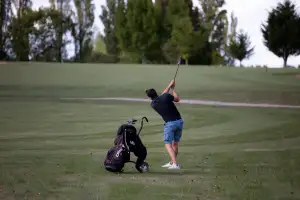Mastering the Ball First Contact: Unlocking the Key to Golf Success

Ball first contact is a fundamental aspect of the game of golf that often goes overlooked. It refers to the moment when the clubface makes contact with the ball during a swing. The quality of this contact can greatly influence the outcome of a shot, making it crucial for golfers to master.
Achieving a solid ball first contact can lead to increased distance, accuracy, and consistency in shots. It allows for better control over the trajectory and spin of the ball, ultimately leading to improved overall performance on the course.
In order to achieve a successful ball first contact, golfers must consider various factors such as club selection, swing mechanics, and timing. By understanding these factors and implementing proper techniques, players can enhance their ability to make clean and powerful contact with the ball.
In this article, we will delve deeper into the importance of a solid ball first contact in golf and explore techniques that can help improve this crucial aspect of the game. We will also discuss common mistakes to avoid and highlight the benefits that come with mastering ball first contact. So let's dive in and unlock the key to golf success through mastering ball first contact!
Importance of a solid ball first contact
The importance of a solid ball first contact in golf cannot be overstated. It is the foundation upon which every successful shot is built. When the clubface meets the ball cleanly and precisely, it sets the stage for accuracy, distance, and control. A solid ball first contact ensures that the energy from your swing is transferred efficiently to the ball, resulting in optimal trajectory and spin.
A poor ball first contact can have disastrous consequences for your game. It can lead to mis-hits, slices, hooks, or even shanks. These errant shots not only cost you strokes but also erode your confidence on the course. Without a solid ball first contact, it becomes difficult to consistently hit the ball where you want it to go.
Achieving a solid ball first contact requires a combination of factors such as proper alignment, grip pressure, body position, and timing. It demands focus and concentration on every shot. Even slight deviations in any of these factors can greatly affect the quality of your contact with the ball.
Professional golfers spend countless hours honing their skills to achieve a consistent and solid ball first contact. They understand that this fundamental aspect of their game sets them apart from amateurs. By prioritizing this aspect of their swing mechanics, they are able to consistently produce accurate shots with maximum distance.
Improving your ball first contact will not only enhance your overall performance but also provide you with a greater sense of satisfaction on the course. It allows you to have better control over your shots and make more informed decisions about club selection and shot strategy.
In conclusion, a solid ball first contact is crucial for success in golf. It forms the basis for accuracy, distance, and control in every shot. By understanding its importance and dedicating time to improve this aspect of your game through practice and proper technique, you can unlock new levels of success on the golf course.
Factors affecting ball first contact
Factors affecting ball first contact in golf can greatly impact the success of a shot. One crucial factor is the angle of attack, which refers to the angle at which the clubhead strikes the ball. A shallow angle of attack tends to produce a clean and solid contact, while a steep angle can result in thin or fat shots.
Another important factor is clubface alignment. The position of the clubface at impact determines the direction and trajectory of the ball. If the face is open or closed, it can lead to slices or hooks respectively, resulting in poor ball first contact.
The speed of the swing also plays a role in ball first contact. A fast swing may cause mis-hits if not properly controlled, while a slow swing might not generate enough power for an optimal strike.
Furthermore, body positioning and weight transfer are critical factors. Proper alignment and balance throughout the swing enable better control over the clubhead, leading to improved ball first contact.
Lastly, external factors such as wind conditions and course conditions can affect ball first contact. Wind can alter the flight path of the ball, making it challenging to achieve a solid strike. Additionally, uneven lies or rough terrain may require adjustments in technique to ensure good contact with the ball.
Understanding these factors and how they influence ball first contact is essential for golfers looking to improve their game. By addressing these variables through proper technique and practice, players can enhance their consistency and accuracy when striking the ball.
Techniques to improve ball first contact
1. Proper setup: Start by ensuring a correct stance, with your feet shoulder-width apart and aligned with the target. Position the ball slightly forward in your stance, just inside your left heel for right-handed golfers. This promotes a descending strike on the ball.
2. Maintain balance: Balance is crucial for a solid ball first contact. Keep your weight evenly distributed between both feet throughout the swing. Avoid swaying or leaning excessively during the backswing and downswing.
3. Focus on clubhead speed: Generating clubhead speed is essential for a crisp ball first contact. Practice swinging smoothly and accelerating through impact, maintaining a consistent tempo throughout.
4. Develop proper wrist hinge: A proper wrist hinge allows for better control and power at impact. During the backswing, hinge your wrists naturally to create a 90-degree angle between your left forearm and the clubshaft.
5. Practice with alignment aids: Utilize alignment aids such as alignment sticks or training clubs to ensure you're striking the ball square at impact. These tools help develop muscle memory and promote consistent ball first contact.
6. Improve hand-eye coordination: Enhancing hand-eye coordination can greatly improve your ability to make solid contact with the ball consistently. Incorporate drills that involve tracking and hitting moving targets to sharpen this skill.
7. Seek professional guidance: Consider working with a golf instructor who can provide personalized feedback on your technique and help identify areas for improvement specific to your game.
By implementing these techniques into your practice routine, you can enhance your ability to consistently achieve a solid ball first contact, leading to improved accuracy, distance, and overall performance on the golf course.
Common mistakes to avoid when making ball first contact
When it comes to making ball first contact in golf, there are certain common mistakes that players should avoid. These mistakes can greatly affect the accuracy and distance of your shots. One common mistake is gripping the club too tightly. This can restrict the natural movement of your wrists and make it harder to achieve a clean ball first contact. It's important to find a grip that allows for a relaxed yet controlled swing.
Another mistake to avoid is lifting your head too early during the swing. This can lead to topping the ball or hitting it thin, resulting in poor ball first contact. Keep your eyes focused on the ball until after you've made contact to ensure a solid hit.
Many players also make the mistake of not aligning their body properly with the target. This can cause misalignment between the clubface and the ball, leading to off-center hits and inconsistent ball first contact. Take the time to set up correctly by aligning your feet, hips, and shoulders parallel to the target line.
Lastly, rushing through your swing is a common mistake that can negatively impact ball first contact. Trying to generate power by swinging too quickly often results in poor timing and loss of control. Instead, focus on maintaining a smooth tempo throughout your swing for better consistency and accuracy.
By avoiding these common mistakes when making ball first contact, you'll be able to improve your overall golf game. Remember to maintain a relaxed grip, keep your head down until after impact, align yourself properly with the target, and maintain a smooth tempo in your swing. With practice and attention to detail, you'll be well on your way to mastering this crucial aspect of golf and unlocking greater success on the course.
Benefits of mastering ball first contact
Mastering ball first contact in golf offers numerous benefits that can greatly enhance your overall game. Firstly, a solid ball first contact leads to increased accuracy and consistency in your shots. When you consistently strike the ball cleanly, it reduces the chances of mishits or misdirections.
Secondly, mastering ball first contact allows for better control over the trajectory and distance of your shots. By striking the ball with precision, you can achieve the desired height and distance, giving you more options when navigating the course.
Furthermore, a solid ball first contact promotes better spin control. The way you strike the ball affects its spin, which in turn influences how it behaves upon landing. By mastering this aspect of your game, you can manipulate the spin to your advantage, enabling you to execute various shot types such as fades or draws.
In addition to these technical advantages, mastering ball first contact also boosts confidence on the course. Knowing that you have developed a reliable and consistent strike will instill a sense of self-assurance in your abilities. This confidence translates into improved mental focus and composure during crucial moments of play.
Lastly, mastering ball first contact contributes to overall enjoyment of the game. When you consistently hit clean and accurate shots, it brings about a sense of satisfaction and fulfillment. It enhances the pleasure derived from playing golf and motivates players to continually improve their skills.
In conclusion, mastering ball first contact in golf yields numerous benefits including increased accuracy, improved control over trajectory and spin, enhanced confidence, and heightened enjoyment of the game. By dedicating time and effort to improving this fundamental skill, golfers can unlock their full potential on the course.
Mastering the ball first contact is a crucial aspect of improving your golf game. By focusing on this key skill, you can unlock greater success on the course. A solid ball first contact leads to more accurate shots, increased distance, and improved control over the trajectory of the ball.
Through understanding the importance of a solid ball first contact, we realize that it sets the foundation for every shot we make. It determines how well we can transfer power from our swing to the ball, ultimately affecting its flight and direction. Without proper technique and timing, even the most powerful swings can result in poor shots.
Several factors influence ball first contact, including grip pressure, clubface alignment, body position, and swing tempo. By paying attention to these elements and making necessary adjustments, we can improve our ability to strike the ball cleanly and consistently.
To enhance your ball first contact skills, there are various techniques you can employ. Practicing with alignment aids or using impact bags can help develop a better sense of clubface control at impact. Additionally, focusing on maintaining a relaxed grip and proper body rotation throughout your swing will contribute to cleaner strikes.
Avoiding common mistakes is equally important when it comes to achieving better ball first contact. Rushing your swing or trying to hit the ball too hard often results in mishits. It's essential to stay patient and maintain a smooth tempo throughout your swing.
Mastering ball first contact offers numerous benefits for your overall golf game. Improved accuracy allows you to hit more fairways and greens in regulation, leading to lower scores. Increased distance off the tee gives you an advantage when attacking longer holes or reaching par fives in two shots.
Furthermore, mastering this skill enhances your confidence on the course. Knowing that you have control over where the ball goes gives you peace of mind during each shot. This mental aspect plays a significant role in performing under pressure and making smart decisions on the course.
In conclusion, by focusing on mastering ball first contact, you can significantly enhance your golf game. It is a fundamental skill that affects every aspect of your performance. By understanding the importance, addressing the factors that influence it, and employing proper techniques, you can achieve cleaner strikes and unlock greater success on the course.
Published: 13. 02. 2024
Category: sports


